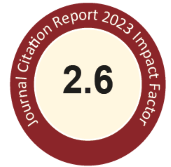Abstract
Safflower (Carthamus tinctorius L.) is a traditional medicinal and edible herb with a long history of use in China. In this study, a model of hepatotoxicity induced by carbon tetrachloride (CCl4) in mice was used to investigate the hepatoprotective effects of kaempferol 3-O-rutinoside (K-3-R) and kaempferol 3-O-glucoside (K-3-G), two kaempferol glycosides isolated from C. tinctorius L. K-3-R and K-3-G, at doses of 200 mg/kg and 400 mg/kg, were given orally to male mice once/d for 7 days before they received CCl4 intraperitoneally. Our results showed that K-3-R and K-3-G treatment increased the level of total protein (TP) and prevented the CCl4-induced increases in serum aspartate aminotransferase (AST), serum alkaline phosphatase (ALP), and hepatic malondialdehyde (MDA) levels. Additionally, mice treated with K-3-R and K-3-G had significantly restored glutathione (GSH) levels and showed normal catalase (CAT) and superoxide dismutase (SOD) activities, compared to CCl4-treated mice. K-3-R and K-3-G also mitigated the CCl4-induced liver histological alteration, as indicated by histopathological evaluation. These findings demonstrate that K-3-R and K-3-G have protective effects against acute CCl4-induced oxidative liver damage. © 2014, Food and Drug Administration, Taiwan. Published by Elsevier Taiwan LLC. All rights reserved.
ScienceDirect Link
Recommended Citation
Wang, Y.; Tang, C.; and Zhang, H.
(2015)
"Hepatoprotective effects of kaempferol 3-O-rutinoside and kaempferol 3-O-glucoside from Carthamus tinctorius L. on CCl4-induced oxidative liver injury in mice,"
Journal of Food and Drug Analysis: Vol. 23
:
Iss.
2
, Article 16.
Available at: https://doi.org/10.1016/j.jfda.2014.10.002
Creative Commons License

This work is licensed under a Creative Commons Attribution-Noncommercial-No Derivative Works 4.0 License.
Fulltext URL
https://www.sciencedirect.com/science/article/pii/S1021949814001343/pdfft?md5=407f71db4ca68bb808b95f495ff2f953&pid=1-s2.0-S1021949814001343-main.pdf
Included in
Food Science Commons, Medicinal Chemistry and Pharmaceutics Commons, Pharmacology Commons, Toxicology Commons

